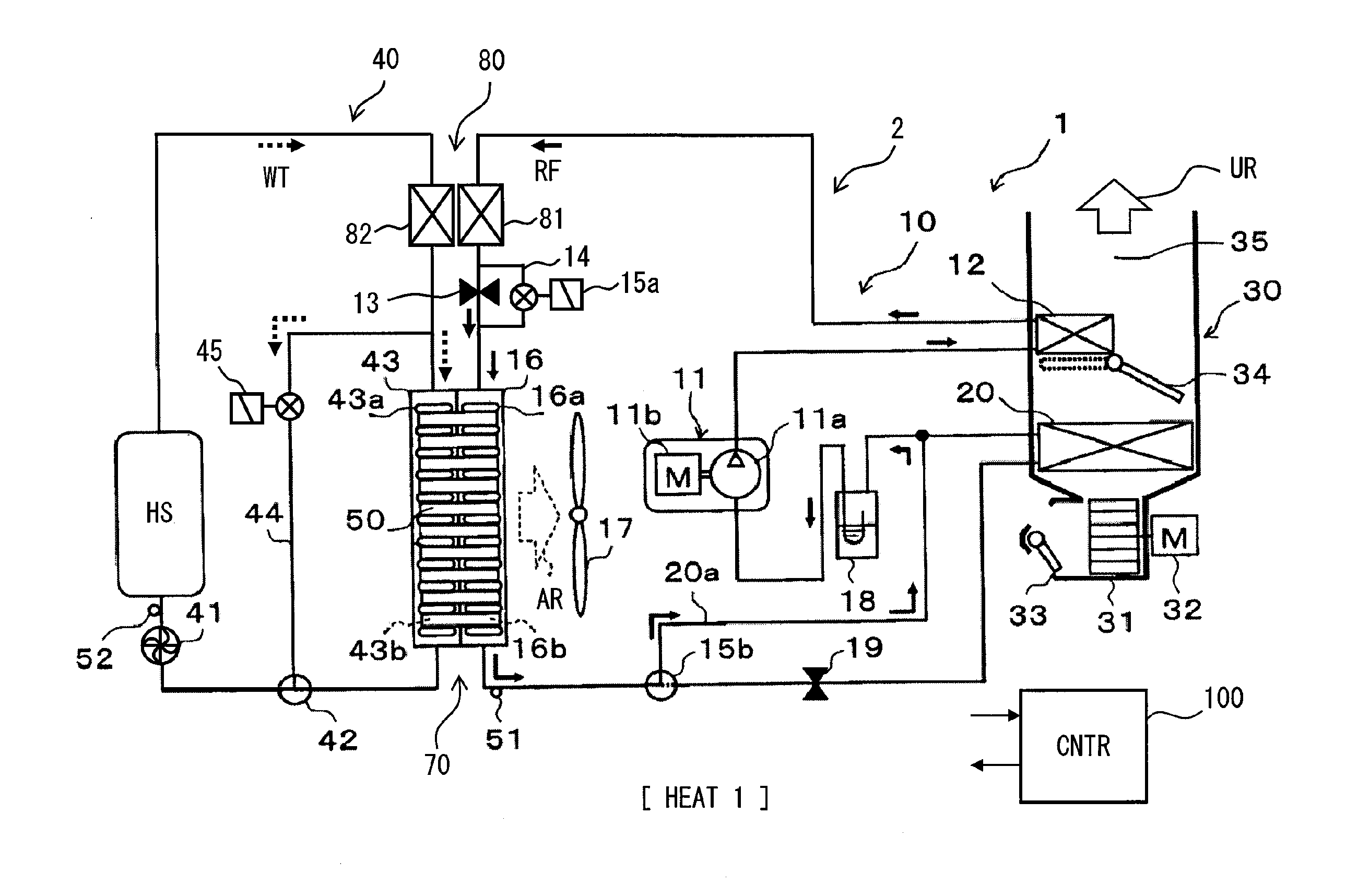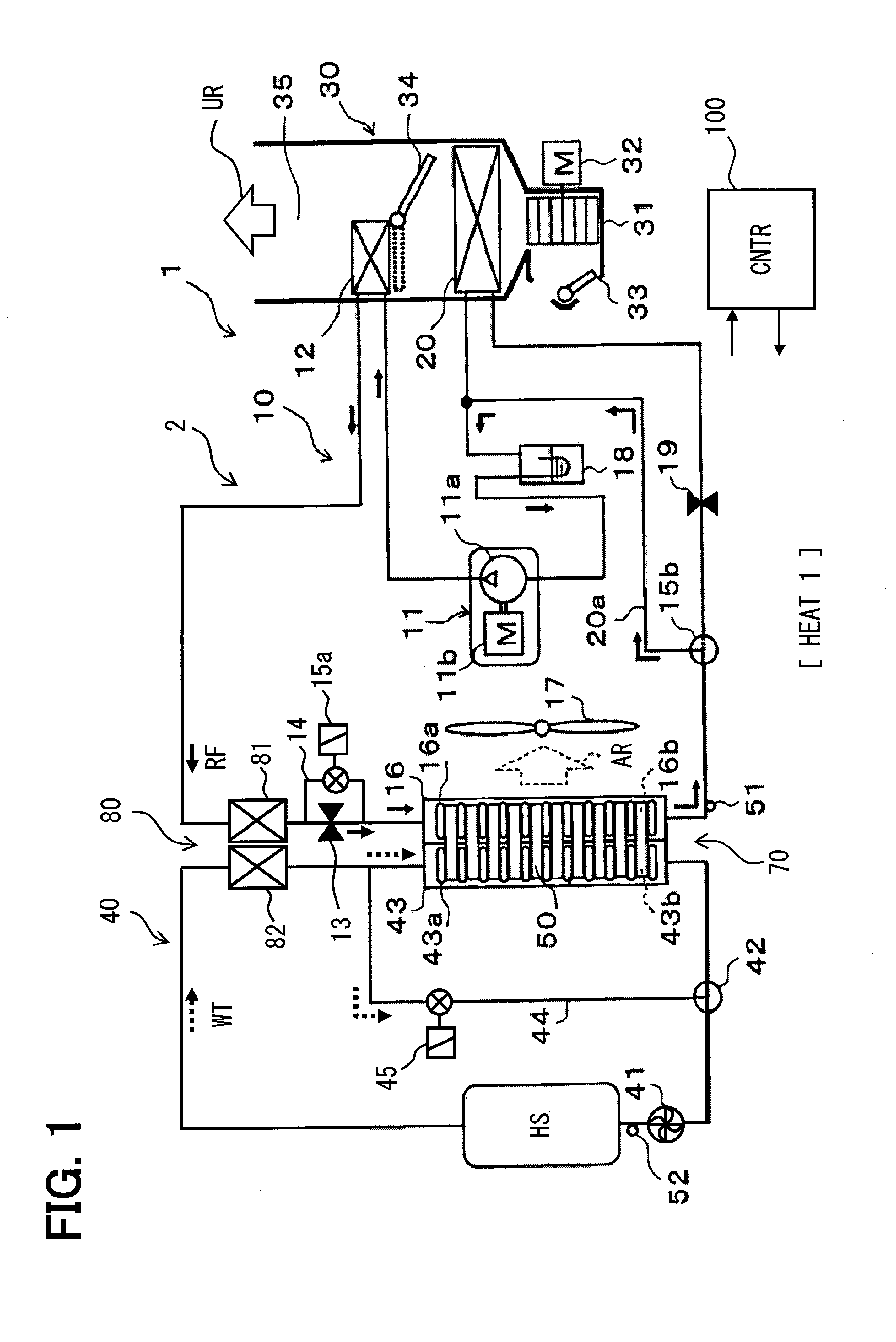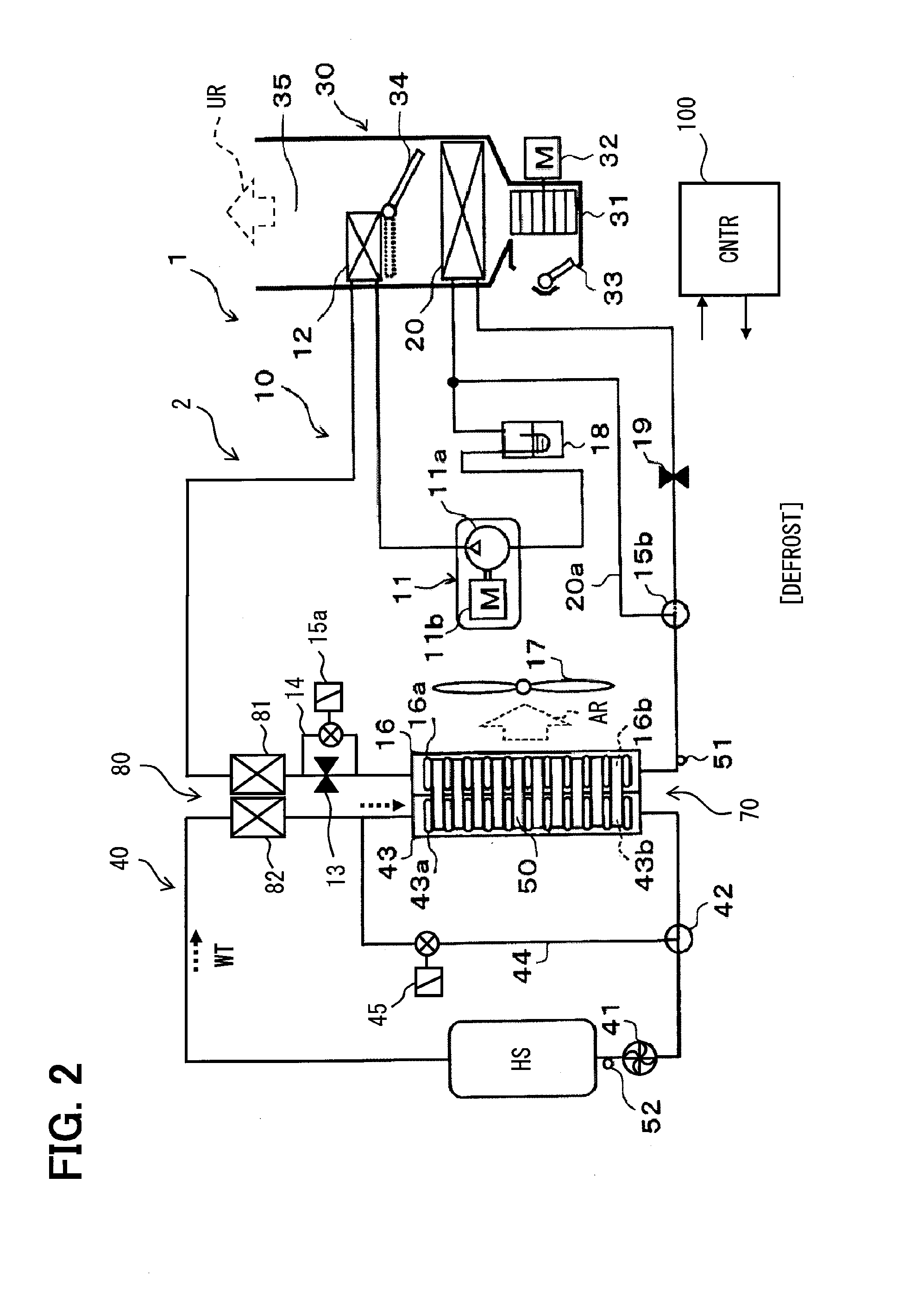Heat pump cycle
a heat pump and cycle technology, applied in heat pumps, lighting and heating apparatus, compression machines with several condensers, etc., can solve the problems of insufficient heat for defrosting, small waste heat of internal combustion engines, and small waste heat of electric devices such as electric motors, so as to reduce frost formation and/or improve defrosting performance.
- Summary
- Abstract
- Description
- Claims
- Application Information
AI Technical Summary
Benefits of technology
Problems solved by technology
Method used
Image
Examples
tenth embodiment
[0194]In the above embodiment, the heat of refrigerant in the refrigerant circuit 10 is supplied indirectly to the heat exchanger 70 through the coolant WT. Instead, the heat of the high-pressure refrigerant in the refrigerant circuit 10 may be transferred directly to the exterior heat exchanger 16 that functions as the evaporator of the refrigerant circuit 10, and the heat exchanger 70 including the exterior heat exchanger 16. In this embodiment, as illustrated in FIG. 19, a radiator 43e of the heat exchanger 70 is used as the heat exchange portion 81 for extracting the heat from the high-pressure refrigerant. The high-pressure refrigerant is supplied to the radiator 43e. With this configuration, the constituent components of the heat exchanger 70 are heated directly by the high-pressure refrigerant. The refrigerant that has flowed out of the radiator 43e is introduced into the exterior heat exchanger 16 through the expansion valve 213. Hence, the radiator 43e may be used as an exa...
eleventh embodiment
[0198]In the above embodiment, the high-pressure refrigerant as the high-temperature medium HMD is introduced directly into the radiator 43e of the heat exchanger 70. Instead, in this embodiment, as illustrated in FIG. 21, the intermediate-pressure refrigerant is introduced directly into the radiator 43e of the heat exchanger 70. The refrigerant circuit 10 is branched between the interior condenser 12 and the expansion valve 213. A decompressor 23 to an intermediate pressure is disposed in the branched passage. The intermediate-pressure refrigerant is supplied to the radiator 43e. A decompressor 24 that decompresses the intermediate-pressure refrigerant to the low-pressure refrigerant is disposed downstream of the radiator 43e.
[0199]The temperature of the intermediate-pressure refrigerant is higher than the temperature of the low-pressure refrigerant decompressed by the expansion valve 213. Hence, the temperature of the intermediate-pressure refrigerant within the radiator 43e is h...
twelfth embodiment
[0200]In the above embodiment, the intermediate-pressure refrigerant that has passed through the radiator 43e is decompressed to a lower pressure. Instead, in this embodiment, as illustrated in FIG. 22, the intermediate-pressure refrigerant is sucked into the gas injection port of the compressor 411. According to this configuration, the intermediate-pressure refrigerant can be supplied to the radiator 43e without use of the decompressor 24.
PUM
 Login to View More
Login to View More Abstract
Description
Claims
Application Information
 Login to View More
Login to View More - R&D
- Intellectual Property
- Life Sciences
- Materials
- Tech Scout
- Unparalleled Data Quality
- Higher Quality Content
- 60% Fewer Hallucinations
Browse by: Latest US Patents, China's latest patents, Technical Efficacy Thesaurus, Application Domain, Technology Topic, Popular Technical Reports.
© 2025 PatSnap. All rights reserved.Legal|Privacy policy|Modern Slavery Act Transparency Statement|Sitemap|About US| Contact US: help@patsnap.com



